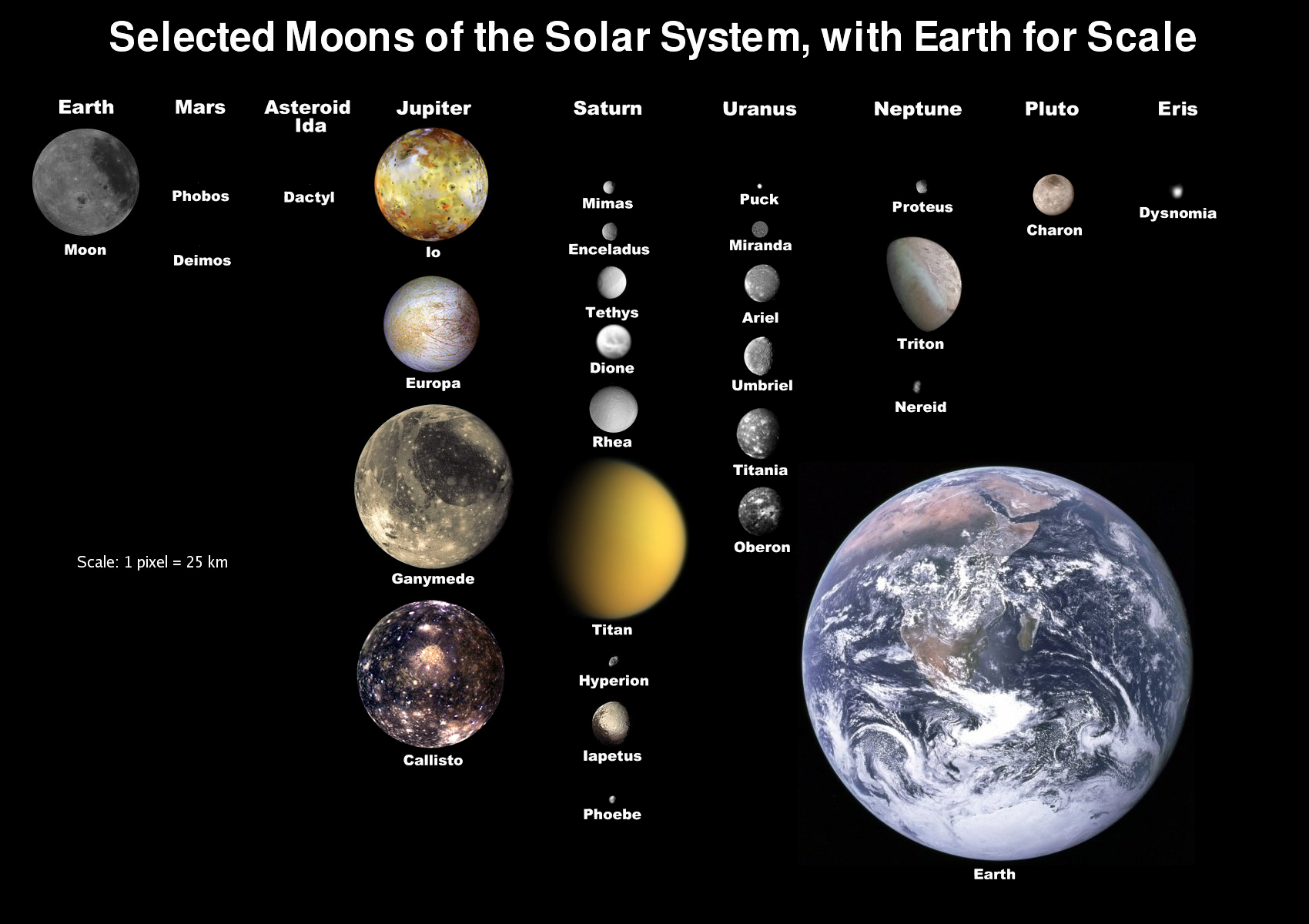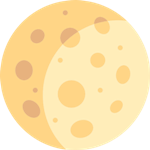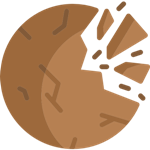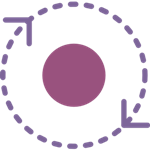Moons Of The Solar System (Natural Satellites) 🌙
A 'Moon' is an object that naturally orbits another astronomical body, with most moons that orbit close to the planet being tidally locked (the same side always faces the planet). A total of 205 moons orbit around the 6 planetary systems; only the planets Mercury and Venus are not known to have any moons. At least 9 moons are known to orbit four dwarf planets. Also, astronomers discover additional moons orbiting minor planets, from time-to-time. Currently, there are 380+ moons known to orbit minor planets like asteroids (five even have two moons), Jupiter trojans, near-Earth objects (two with two satellites each) and trans-Neptunian objects! Check out this list of the 30 Largest Moons!

Facts About The Earth's Moon
The Moon is Earth's only permanent natural celestial companion! It is the fifth-largest moon in the Solar System, produces the Earth's ocean tides, is believed to have formed shortly after Earth and is the only other astronomical body that humans have set foot on!
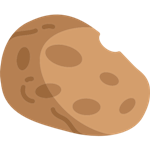
Jupiter's Jovian Moon System
Jupiter is known to have at least 69 moons; the most massive of which are the four Galilena moons (Io, Europa, Ganymede and Callisto) that were famously discovered in 1610 by Galileo Galilei. The remaining moons such as the inner moon Amalthea and 61 outer moons are relatively tiny!
Saturn's Amazing Moons
Saturn is known to have at least 82 diverse moons (the most in the solar system) from the largest known as Titan, the icy Enceladus, spongy-looking Hyperion, ridged and two-faced Iapetus, the Death Star moon Mimas to the strangely smooth egg-shaped Methone and many more!
Uranus' Icy Moons
Planet Uranus is known to have at least 27 moons all named after Shakespeare (or Alexander Pope) characters. 5 are large enough to have formed into near perfect spheres, theses are known as Ariel, Miranda, Oberon, Titania, Umbriel with a smaller inner moon called Puck!
Neptune's Frozen Moons
There have been 14 moons discovered to orbit Neptune, from the largest called Triton (with a diameter of over 2,700km) to the second largest, the irregularly shaped Proteus (420km in diameter) right down to Neptune's smaller moons of less than 20km in size. It is likely when a Space Probe next visits Neptune it'll discover additional small moons!
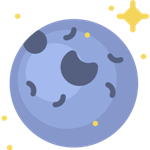
Even Dwarf Planets Have Moons!
Most dwarf planets that have been discovered have at least one moon, such as Pluto's Charon, Eris' Dysnomia, Haumea's Hiʻiaka and Makemake's moon S/2015 (136472) (which doesn't have a proper name yet).

Lesser Known Moons of the Solar System
There are several other strange moons that orbit other small dwarf planets, Jupiter trojans, centaurs - there are even asteroids that have not one but several moons!
